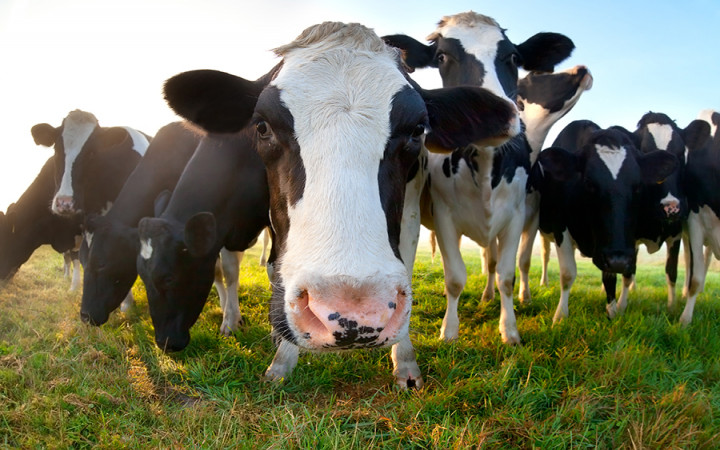Today’s Wonder of the Day was inspired by Ms. R. Ms. R Wonders, “Why do cows have 4 stomachs?” Thanks for WONDERing with us, Ms. R!
We were wandering through the Wonderopolis pasture the other day when we overheard an interesting conversation between a couple of cows:
Angus: Hey Bull! Are you hungry?
Bull: Of course, I'm hungry! When have I ever not been hungry?
Angus: That's true. After all, we do have four stomachs to fill…
Bull: Right now, my grass stomach is full, but my ice cream stomach is on empty.
Angus: Let's go to the for a milkshake then!
Bull: First one there gets the lion's share!
We're not sure what happened later in the , but we were curious after overhearing their conversation. Do cows really have four stomachs?
The answer to that question is sort of, but not really. It's more accurate to say that a cow has one stomach with four compartments. Since a cow's stomach is quite different than a human's, let's take a closer look at what makes a cow's stomach so unique.
The four compartments of a cow's stomach are the rumen, reticulum, omasum, and abomasum. Grasses and other roughage that cows eat are hard to break down and digest, which is why cows have specialized compartments. Each compartment has a special function that helps to digest these tough foods.
The rumen is the first and largest compartment of the cow's stomach. It can hold up to 50 gallons of food as it begins the digestion process.
When a cow eats, it does not thoroughly chew its food like humans do. Instead, it only chews it enough to swallow it. As it eats, the rumen begins to fill with partially-chewed food. Billions of enzymes, microbes, and digestive juices combine to begin to break down the food.
As the food breaks down, part of it passes to the second and smallest compartment, the reticulum, which is also sometimes called the honeycomb. The reticulum traps things the cow shouldn't have eaten, such as bits of metal or rocks.
In the reticulum, the food also mixes with saliva to produce small wads of food called cud. Cows regurgitate these bits of cud back into their mouths, where they then chew them completely. Chewing cud releases saliva which acts as an antacid in the rumen, allowing cows to digest their food better. After thoroughly chewing the cud, the cow swallows again and the food passes back into the rumen where it is broken down further before being sent on to the last two compartments of the stomach.
In the third compartment, the omasum, food is further broken down and filtered. All the water is also absorbed out of the food in the omasum.
Finally, the food reaches the fourth and final compartment, the abomasum, which is sometimes called the "true stomach" because it most closely resembles the human stomach. In the abomasum, the final stages of digestion take place. Essential nutrients are extracted and sent to the bloodstream, and the rest is sent along through the intestines.
If you've ever watched cows on a farm, it might seem like they spend a lot of time eating. They actually do! A cow can spend six to eight hours or more each day eating. Now that you know what all goes on inside the four compartments of a cow's stomach, you can understand why this process takes so much time!





